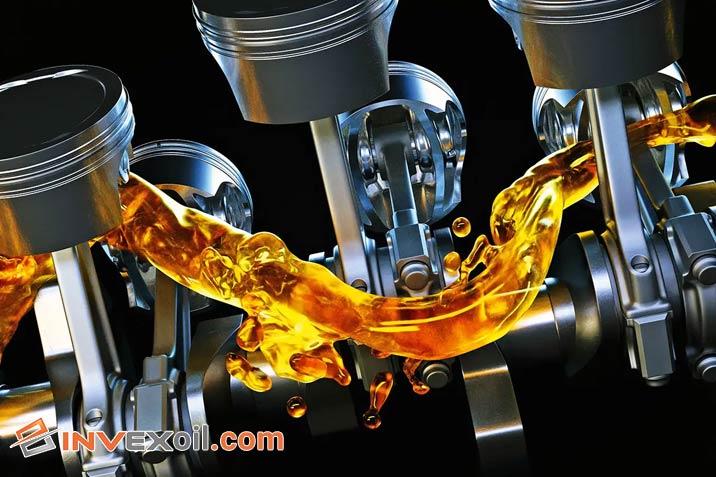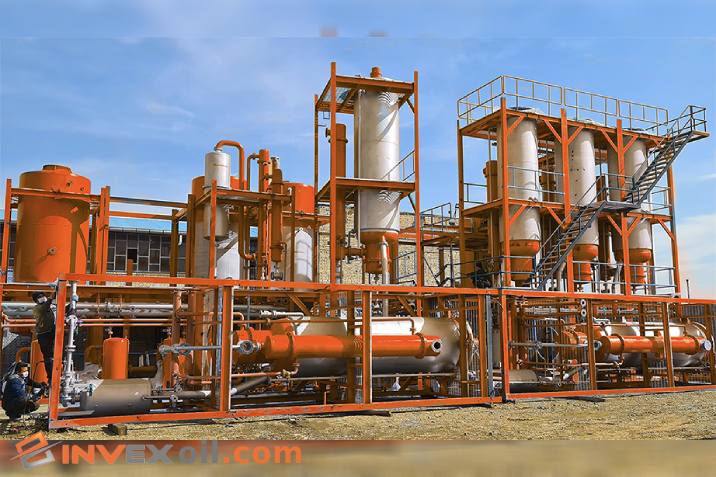Automotive maintenance requires understanding the importance of mixing synthetic and conventional oil. Knowing this importance can significantly impact performance and environmental sustainability. By exploring the benefits of combining these oils, such as improved engine protection and enhanced fuel efficiency, we can then delve into the crucial topic of used oil recycling processes.
Implementing proper disposal methods and recycling techniques ensures that used oil from mixing synthetic and conventional oil doesn’t become hazardous waste. This preserves our ecosystem and reducing pollution. This comprehensive article sheds light on the intricacies of mixing oils, its advantages, and how to responsibly manage used oil through recycling initiatives. With the aim of empowering readers with valuable insights, let’s dive into the world of efficient lubrication practices and environmental stewardship.
Table of Contents
What is Synthetic Oil?
Synthetic oil, a meticulously engineered lubricant, surpasses conventional oil in various aspects, delivering exceptional performance and protection. Crafted through a sophisticated refining and modification process, synthetic oil blends petroleum-based or synthetic compounds to create a lubricant that excels in maintaining engine health.
Synthetic oil encompasses carefully selected base oils fortified with advanced additives, undergoing a meticulous manufacturing process to eliminate impurities and enhance molecular structure. This meticulous formulation yields numerous benefits, including improved lubrication, reduced friction, and heightened engine cleanliness. Also, it exhibits exceptional thermal stability and oxidation resistance, providing a shield against engine deposits, sludge, and varnish buildup. Furthermore, its advanced composition ensures consistent viscosity across a wide temperature range, granting enhanced protection during cold starts and extreme operating conditions.
Benefits of Synthetic Oil
Utilizing synthetic oil in your vehicle reaps a multitude of advantages. Its superior engine protection properties significantly reduce wear and friction, promoting a longer engine lifespan. The reduced friction also enhances fuel efficiency, allowing for improved mileage and reduced emissions.
Moreover, synthetic oil’s resistance to thermal breakdown and volatility ensures sustained performance, even under severe temperatures. This attribute proves particularly advantageous for high-performance engines and vehicles frequently subjected to extreme driving conditions.
Additionally, synthetic oil typically outlasts mixing synthetic and conventional oil, extending the time between oil changes. This not only reduces maintenance frequency but also translates into long-term cost savings.
- Synthetic oil offers enhanced engine protection, reducing wear and friction.
- Improved fuel efficiency and reduced emissions.
- Superior thermal stability and resistance to breakdown under extreme temperatures.
Common Myths about Synthetic Oil
Clarifying prevalent misconceptions about synthetic oil is essential for making informed decisions.
One persistent myth suggests that synthetic oil causes engine leaks. However, modern synthetic oils are specifically formulated to be fully compatible with engine seals, eliminating the risk of leakage.
Another myth revolves around potential engine damage when switching to synthetic oil from conventional oil. The truth is that such a transition is safe and often beneficial. Synthetic oil’s superior properties can enhance engine performance, provided the manufacturer’s guidelines are followed.
- Myth: Synthetic oil leads to engine leaks. (Clarification: Modern synthetic oils are seal-compatible.)
- Myth: Switching to synthetic oil may damage the engine. (Clarification: Safe to switch with potential performance benefits.)
What is Conventional Oil?
Conventional oil, widely used in the automotive industry, is a lubricant derived from crude oil. It undergoes a refining process to remove impurities and enhance its lubricating properties. Understanding the characteristics of conventional oil is crucial for making informed decisions regarding engine maintenance and lubrication practices.
Conventional oil, also known as mineral oil, is a petroleum-based lubricant that has been used for decades. It is sourced from naturally occurring crude oil reserves and refined to meet industry specifications. Conventional oil is known for its versatility and compatibility with a wide range of engines, making it a popular choice among vehicle owners.
Pros and Cons of mixing synthetic and conventional oil
Pros of mixing synthetic and conventional oil:
- Affordability: Conventional oil is generally more affordable compared to synthetic oil, making it a budget-friendly option for routine oil changes.
- Availability: Conventional oil is widely available, making it easily accessible for vehicle owners.
Cons of mixing synthetic and conventional oil:
- Performance under Extreme Conditions: Conventional oil may exhibit limitations in extreme temperatures and demanding driving conditions, where synthetic oil offers superior performance and protection.
- More Frequent Oil Changes: Due to its composition, conventional oil typically requires more frequent oil changes compared to synthetic oil.
While conventional oil serves as a reliable lubricant for many vehicles, it’s essential to consider factors such as driving conditions, manufacturer recommendations, and personal preferences when deciding between conventional and synthetic oil. Understanding the pros and cons allows you to make an informed choice based on your vehicle’s specific needs.
By providing comprehensive insights into conventional oil, we aim to empower readers with the knowledge necessary for effective lubrication practices and optimal engine performance. The following sections will explore the advantages and considerations of mixing synthetic and conventional oil, offering valuable guidance for maintaining your vehicle’s longevity and efficiency.
Mixing Synthetic and Conventional Oil
Combining synthetic and conventional oil has become a topic of interest among vehicle owners seeking to optimize performance and balance costs. Understanding the implications, safety considerations, and recommended practices associated with mixing these oils is essential for making informed decisions regarding lubrication practices.
Is It Safe to Mix Synthetic and Conventional Oil?
Mixing synthetic and conventional oil is generally safe and does not cause any immediate harm to your engine. Both types of oil are compatible and share similar chemical properties, allowing them to blend seamlessly. However, it’s important to note that the benefits of mixing oils may vary depending on the specific blend and engine requirements. Consulting your vehicle manufacturer and considering factors such as driving conditions and climate can help you make an informed decision.
Potential Issues with Mixing Oils
While mixing synthetic and conventional oil is generally safe, there are a few potential issues to be aware of. One consideration is the impact on oil viscosity. Synthetic oils often have better viscosity stability than conventional oils, which may affect the overall viscosity of the blend. Additionally, the additive packages of synthetic and conventional oils may differ, potentially impacting the performance of certain additives.
Recommended Practices for Mixing Oils
To ensure optimal results when mixing synthetic and conventional oil, consider the following practices:
- Follow Manufacturer Recommendations: Check your vehicle manufacturer’s guidelines to determine if they allow mixing oils and if there are any specific recommendations.
- Similar Viscosity Grades: Choose oils with similar viscosity grades to maintain proper lubrication and performance. Mixing oils with significantly different viscosities can affect engine protection.
- Gradual Transition: If switching from one oil type to another, consider gradually introducing the new oil to allow your engine to adapt and minimize any potential issues.
By understanding the safety aspects, potential considerations, and recommended practices associated with mixing synthetic and conventional oil, you can confidently make decisions that optimize engine performance and longevity.
Factors to Consider When Mixing Oils
When it comes to mixing oils, several key factors should be taken into account to ensure optimal performance and engine health. Understanding oil viscosity and compatibility, considering engine age and condition, and following manufacturer recommendations are crucial in making informed decisions for oil blending.
Oil Viscosity and Compatibility
Oil viscosity refers to its thickness or resistance to flow. It is essential to select oils with compatible viscosities when mixing them. Check the oil specifications and look for matching viscosity grades to ensure proper blending. Mismatched viscosities can lead to inadequate lubrication and potential engine damage.
Engine Age and Condition
The age and condition of your engine play a significant role in determining whether mixing oils is suitable. Older engines or those with higher mileage may benefit from a blend of synthetic and conventional oil, as it can provide improved lubrication and reduce wear. However, engines in pristine condition may require specific oil types recommended by the manufacturer.
Manufacturer Recommendations
Always consult the manufacturer before mixing oils. Manufacturers conduct extensive testing to determine the most suitable oil types and blends for their engines. Follow their guidelines regarding oil specifications, viscosity grades, and recommended mixing practices to ensure compatibility and maintain warranty coverage.
The table below illustrates a viscosity comparison chart for commonly used synthetic and conventional oils. It provides a quick reference for selecting oils with compatible viscosities for mixing purposes.
| Oil Type | Viscosity Grade |
| Synthetic Oil A | 5W-30 |
| Synthetic Oil B | 10W-40 |
| Conventional Oil C | 15W-40 |
| Conventional Oil D | 20W-50 |
Remember to always verify specific product recommendations and refer to the manufacturer’s guidelines for optimal oil blending practices.
Conclusion
In order to ensure the optimal performance and maintenance of your engine, it is crucial to understand the process and considerations when mixing synthetic and conventional oils. When blending oils, users can make informed decisions by considering factors such as oil viscosity and compatibility, engine age and condition, and adhering to the manufacturer’s recommendations if they want to make the best decisions. There is a need to ensure that proper oil ratios are maintained, to follow recommended oil change procedures, and to monitor oil performance on a regular basis.
If individuals follow these best practices when mixing synthetic and conventional oils, they are able to achieve cost-effectiveness, performance enhancement, and environmental considerations when mixing synthetic and conventional oils. When we make informed decisions about oil blending, we can contribute to the longevity and efficiency of our engines. In most synthetic blend oils, the synthetic oil content will vary from 10% to 25%, depending on the type of synthetic oil being used.
FAQ
These questions are the most commonly asked ones about mixing synthetic and conventional oil. You can find the answers to them below:
Can I mix synthetic and conventional oil?
Yes, you can mix synthetic and conventional oil, but it’s important to follow the manufacturer’s recommendations and consider factors like viscosity and compatibility.
What are the potential issues with mixing synthetic and conventional oil?
Potential issues include reduced performance, decreased oil efficiency, and potential chemical incompatibilities between different oil types.
How do I determine the right oil ratio when mixing synthetic and conventional oil?
To determine the right oil ratio, refer to the manufacturer’s guidelines and consider factors such as engine age, condition, and the intended usage of the vehicle.

Hello, This is Matteo Hudson Copywriter from InvexOil. We are here to provide super-important content to help you learn more easily and be involved in the world of Petroleum and Chemistry. We are here to answer your questions, help you to have better services, and also find the best solution for your problems. Don’t be shy and ask your questions in the comment box or call our number. If you want to connect with me directly, you can search for my name on Linkedin.






